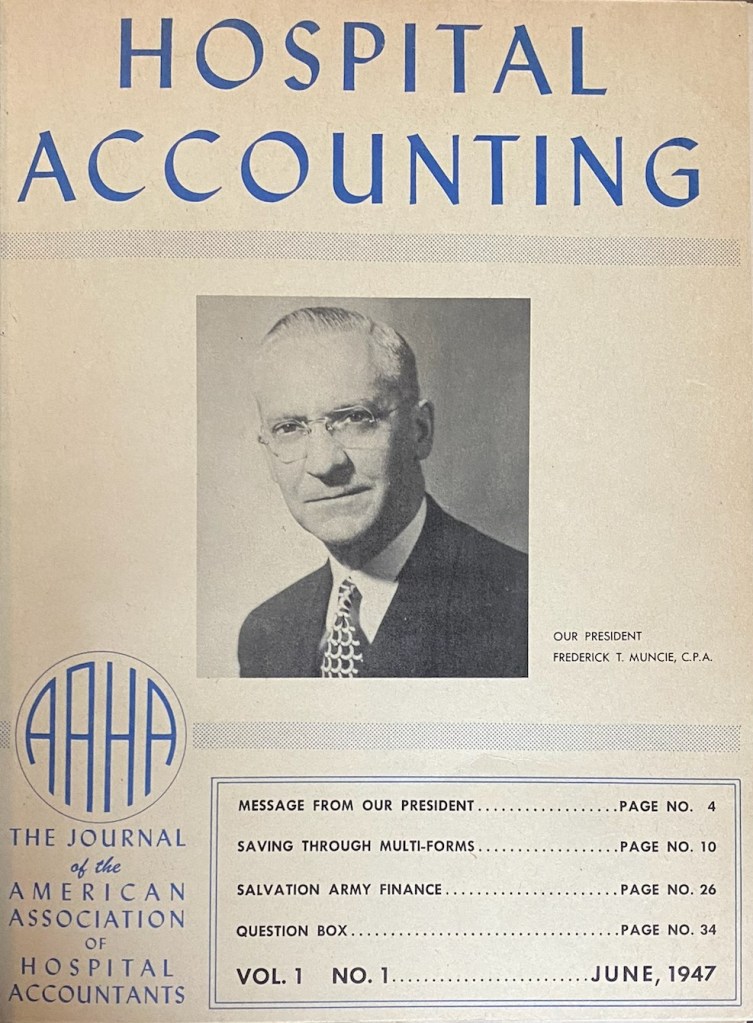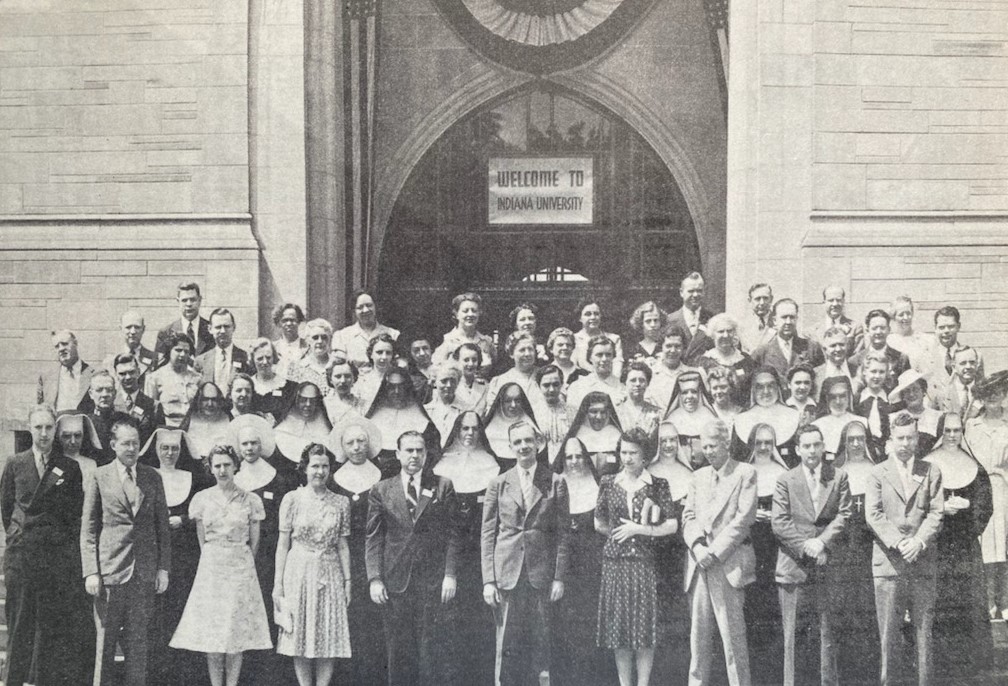“The completion of the organization of The American Association of Hospital Accountants [AAHA] is the fruition of the hopes, dreams, aspirations, and planning of many serious-minded hospital accountants who conscientiously believe the hospital accountant and [their] profession deserves a prominent place in the constellation of other hospital specialties.”
— Frederick T. Muncie, CPA, HFMA founding father and the Association’s first president
With these words in the June 1947 inaugural issue of Hospital Accounting, the Journal of the American Association of Hospital Accountants, Frederick T. Muncie heralded the culmination of a three-year national effort to establish the AAHA — which would eventually evolve into HFMA — as the nation’s premier association for healthcare finance professionals. The AAHA was officially founded about one year earlier, with its first meeting occurring in the Summer of 1946. Writing in his “Message from our President,” Muncie said, “It may be a bit of vain prophecy, but in the exuberance of our enthusiasm, we believe that the formation of the American Association of Hospital Accountants is an epoch-making event in the hospital field.”

A labor of love
The title of this story echoes the journal’s dedication on the first page to Indiana University, “within whose walls hospital accountants first gathered and a dream became a reality.” The pages of this first issue also give clear evidence of the influence and impact of HFMA’s founding leaders, including:
- William G. Follmer, AAHA secretary-treasurer, and consultant on accounting, Rochester Hospital Council Inc., Rochester, New York, who wrote the letter announcing the formation of the AAHA
- Charles F. Mehler, Jr., AAHA director, North Atlantic States, and comptroller, Hamot Hospital, Erie, Pennsylvania
- Robert H. Reeves, chair of the AAHA’s nominating and bulletin committees, and chief accountant, Eight Street Division, Pennsylvania Hospital, Philadelphia
- Helen M. Yerger, chair of the AAHA’s public relations committee, and assistant superintendent and accountant, Park Avenue Hospital, Rochester, New York
A sign of things to come
The journal dives quickly into its purpose of informing and guiding hospital finance leaders:
- In her feature, “Saving through multi-forms,” Helen Yerger offers an approach to simplifying administrative process by combining forms that serve duplicate purposes.
- Major Floyd C. Freeman, auditor for the Salvation Army, outlines the principles of “Salvation Army Finance,” highlighting the association’s early emphasis on service to society — also evidenced by the high-level involvement of many sisters of religious orders represented in the journal’s pages.
- Robert Reeves offers readers access to a newly developed cost-finding system for small hospitals, and in a separate article, he shares letters and comments from hospital administrators in response to the objectives AAHA’s founders listed in the association’s constitution.
Already in this first issue of the Association’s journal, we see intimations of the depth and diversity of content that will be the publication’s hallmark over the next 75 years.

Member dues in 1946 for Senior members of the AAHA
- A Senior member had to be the chief accounting officer of a hospital, a hospital administrator with a hospital accounting background or an accountant having an official connection with a hospital association, hospital council or allied organization.
- Dues for a Junior member were $5. The prospective member had to be an employee of a hospital accounting department, association, council or allied organization.
- Prospective members also had to send an application fee, $10 for Senior members and $5 for Junior members, which would be refunded if the application was not accepted for any reason.
HFMA trivia
Did you know that before HFMA (the AAHA) had Chapters, it had 12 Regions, including three in Canada (Eastern, Central and Western). HFMA’s earliest members also included one member from Monterrey, Mexico.





